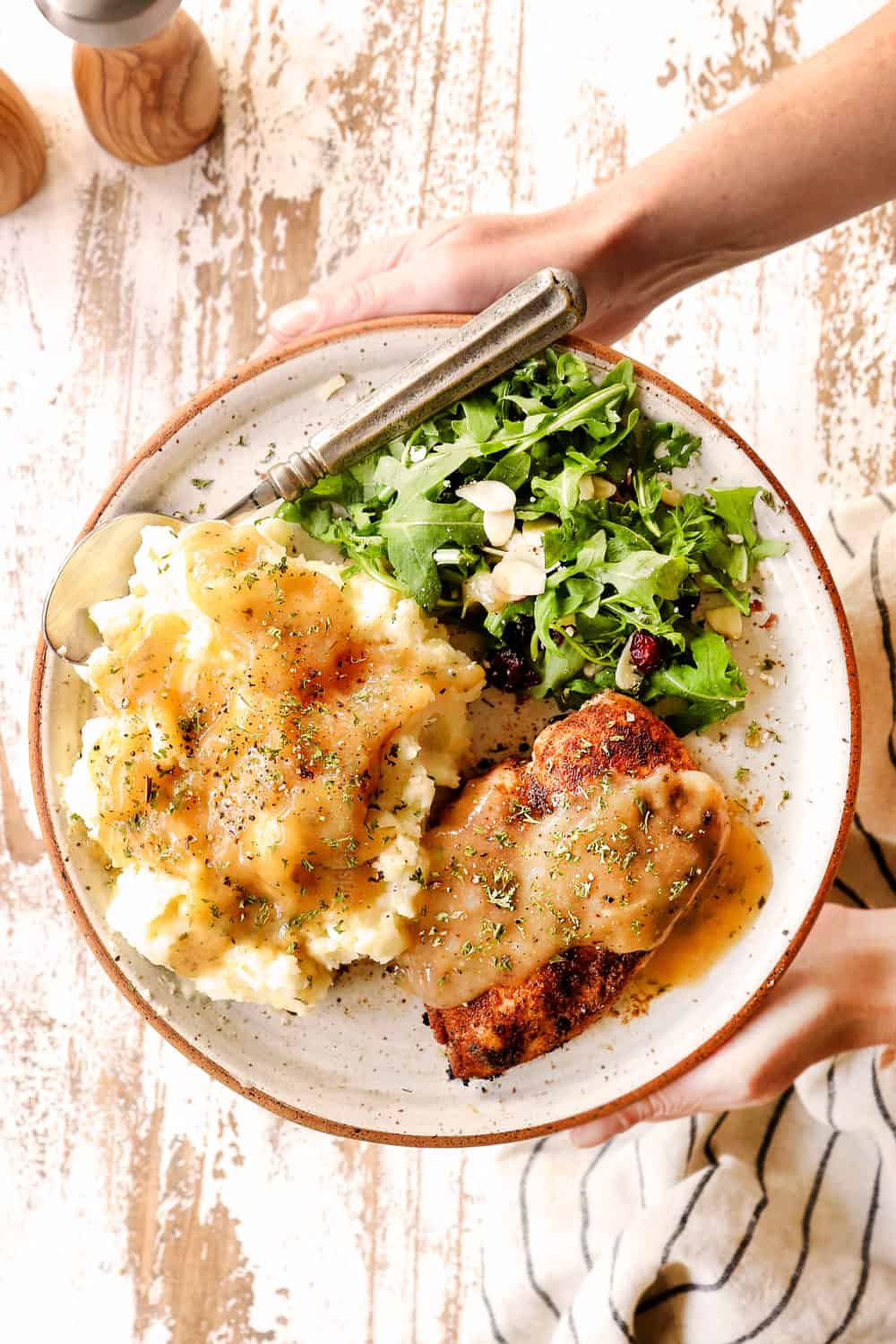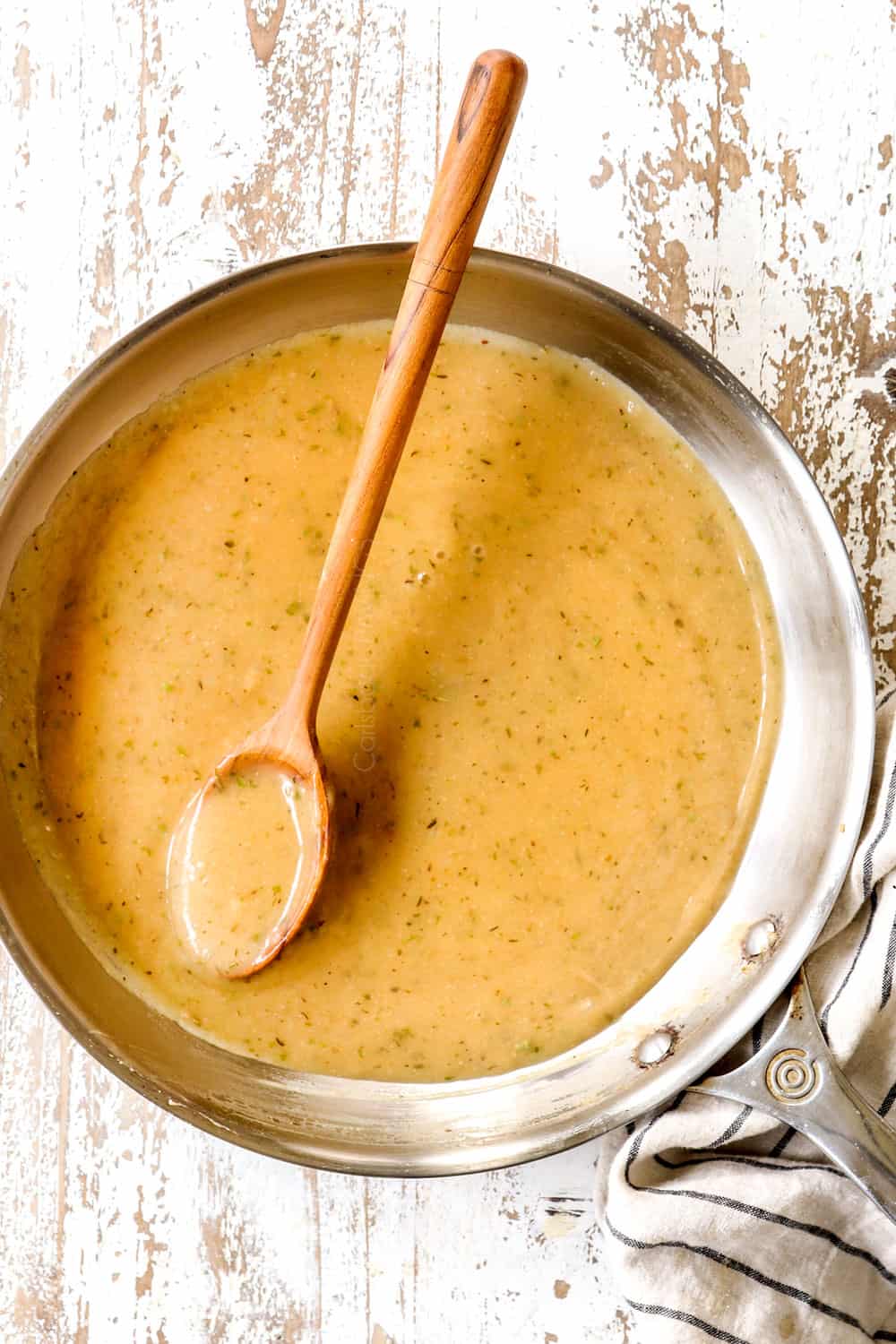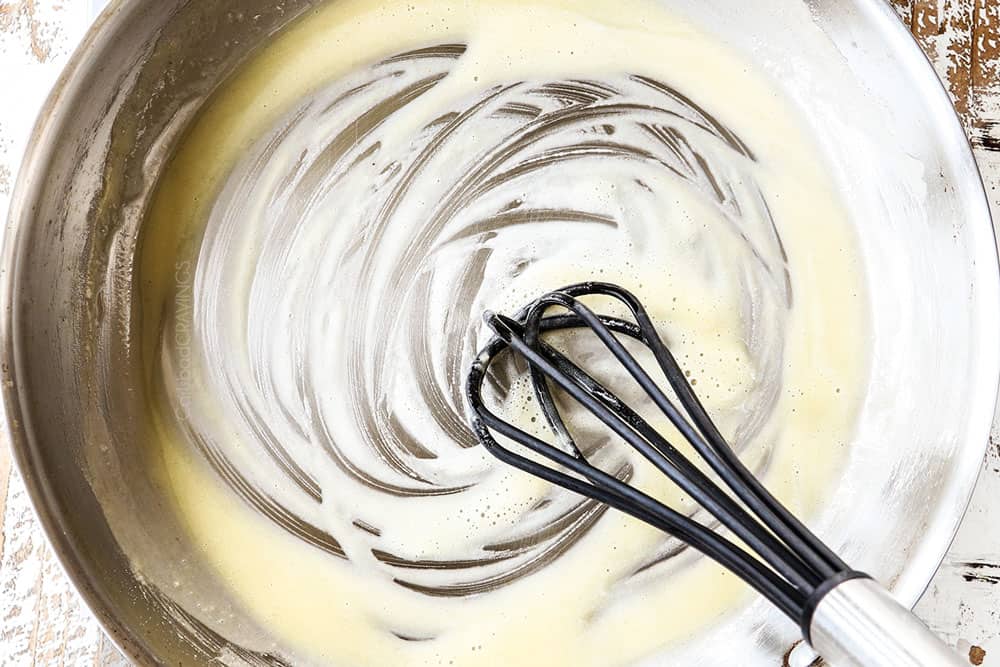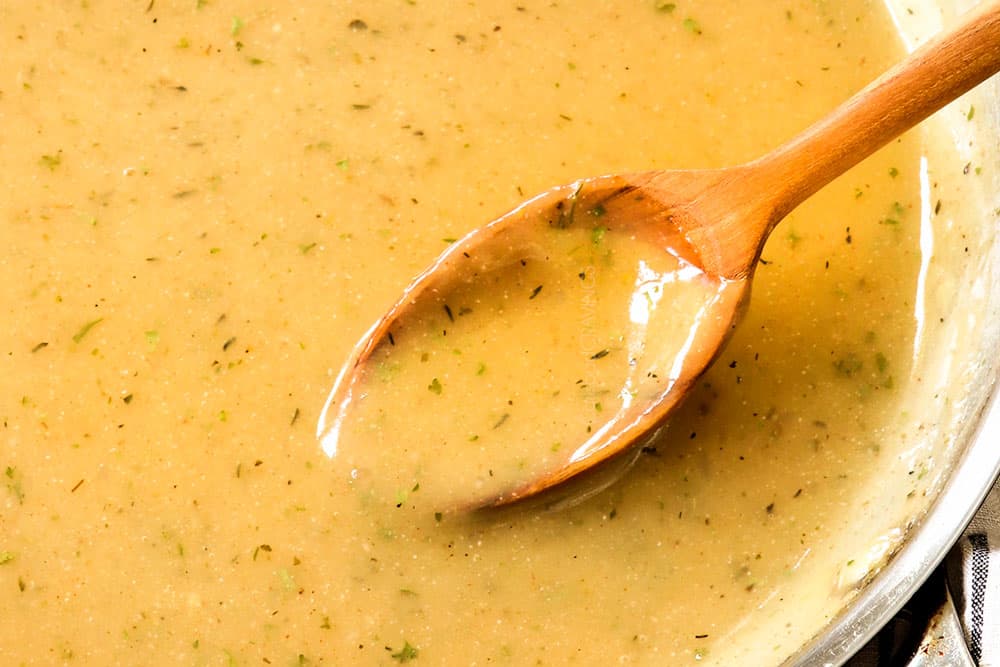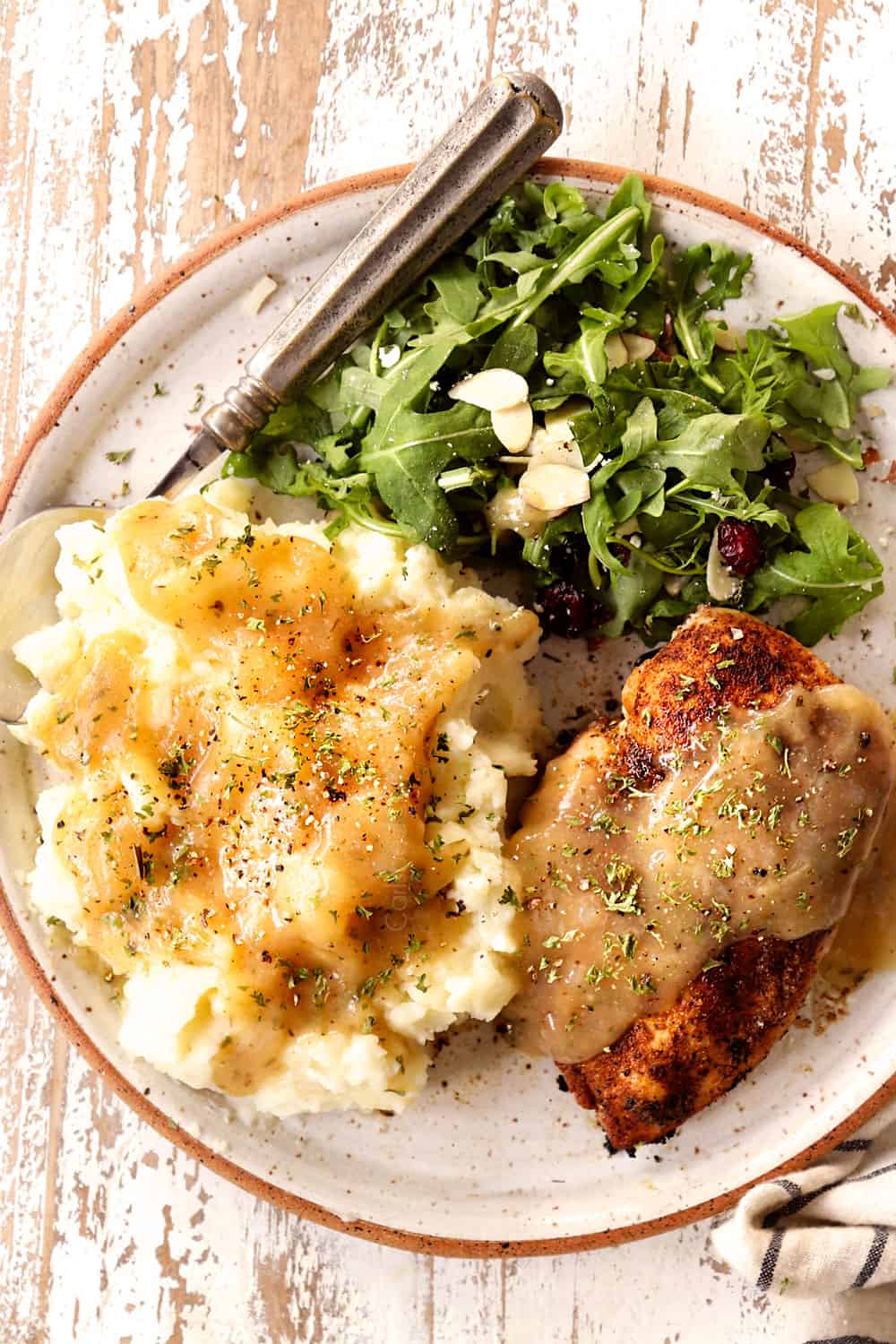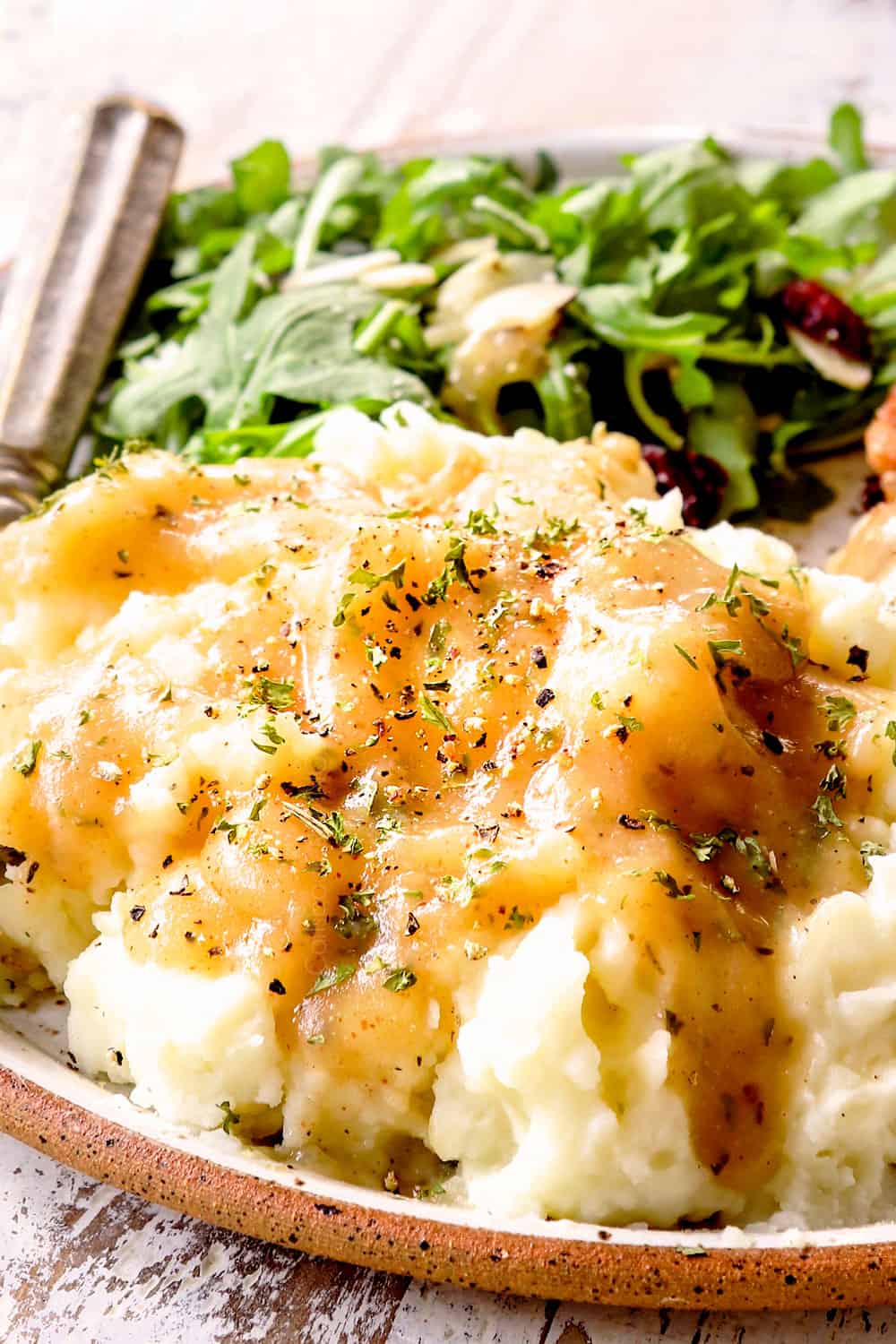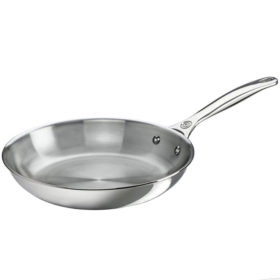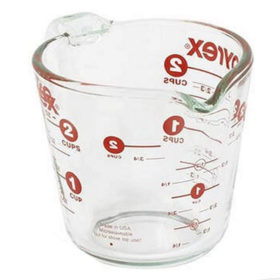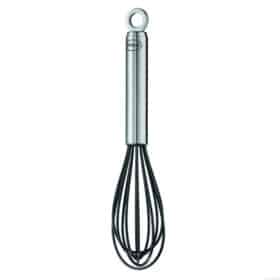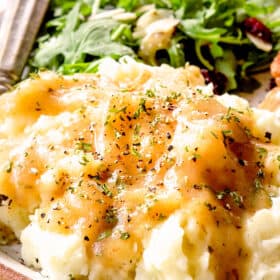PIN THIS RECIPE TO SAVE FOR LATER
how to make homemade chicken gravy video
What are chicken drippings?
Chicken gravy, (as well as turkey gravy and beef gravy) traditionally start with drippings. Drippings are what’s left in the bottom of the roasting pan after you’re done roasting the chicken – all of the chicken bits, fat, herbs and spices that have melted off of the chicken. The drippings boast concentrated flavor which translate into incredible gravy. So, if you have roasted a chicken (or turkey), make sure to save the drippings, you can even freeze them for later. If you haven’t roasted a chicken, you can still make incredible gravy with this recipe instead! In short, this homemade chicken gravy recipe is magical. You will be blown away at how the humble, everyday ingredients transform into a mesmerizing gravy that you’ll be strongly tempted to guzzle. So, guzzle on, or serve the gravy over potatoes, biscuits, rice, chicken, turkey, alongside fried chicken, etc.
Chicken Gravy From Drippings
If you’ve roasted your own chicken, don’t throw away the drippings, those are flavor gold! Scrape them up and add them to a liquid measuring cup, skim off the fat, then add enough broth to equal 2 cups total. Make the chicken gravy recipe as written, but begin my omitting the chicken bouillon. Your drippings will likely be flavorful enough that the gravy won’t need it. After the gravy is cooked, give it a taste and if it still needs a little oomph of flavor, then add chicken bouillon ¼ teaspoon at a time.
Can I make gravy without chicken drippings?
Yes! That is where this chicken gravy recipe comes in! To replicate the flavor of chicken drippings, we add chicken bouillon to the gravy. It infuses the gravy with intense flavor to make it taste like it’s come from a roasted chicken! Chicken bouillon is created by blending ingredients such as roasted chicken meat, vegetables including onions, celery and carrots, and various seasonings, spices and herbs. It’s all the flavor without all the work.
Should You Make Gravy with a Roux or a Slurry?
You may be wondering why this homemade chicken gravy has both flour and cornstarch, or a roux and a slurry. I did a side by side taste taste of an all flour gravy, all cornstarch gravy and a combination of flour and cornstarch – the winner hands down was the flour and cornstarch gravy. But first things first, what is a roux? A slurry?
A roux is a fancy word for cooking fat (usually butter but can also be oil or a combination of the butter and oil), with flour until smooth in order to thicken gravies and sauces. A slurry is made of cornstarch whisked with a cold liquid, typically water or broth, until smooth. The slurry is then added to liquid and simmered in order to thicken.
INGREDIENTS FOR CHICKEN GRAVY recipe
This homemade chicken gravy requires barely any prep work and has such a short ingredients list. Here’s all you’ll need:
- You don’t need as much butter in the roux so the gravy has half the fat! 2) You reap the benefits of the flavorful roux instead of a flavorless, watery slurry. 3) You reap the benefits of a rich, creamy roux based gravy and a smoother, silkier slurry based gravy AKA the ideal texture and consistency. 4) You avoid the overly shiny gumminess that often is associated with slurry gravies.
Butter: provides the base of the roux which make the gravy rich and flavorful. Use unsalted butter so we can add chicken bouillon without the gravy being too salty. All-purpose flour: is melted with the butter to thicken the gravy. I’ve only made this recipe with all-purpose flour, but I imagine a 1:1 gluten-free flour substitute could also be used. Cornstarch: is also used to thicken the gravy and helps make it extra smooth. Chicken broth: please use reduced sodium chicken broth so your gravy isn’t too salty. Low sodium chicken broth also allows us to use chicken bouillon – a flavorful secret weapon. Chicken bouillon: just one teaspoon adds the rich, deeply satisfying chicken flavor as if it came directly from chicken drippings. You can use granulated bouillon (powder), bouillon cubes or better than bouillon/chicken base all in equal amounts. Add the bouillon directly to the broth without dissolving in liquid first. If using cubes, you will need 1 cube which you crush up and then add directly to the broth. Dried herbs and spices: dried parsley, thyme, oregano, paprika, salt, and pepper layers the gravy with just the right amount of flavor.
How to make chicken gravy
Are you ready to see just how easy this homemade chicken gravy recipe is to make?
Step 1: Make the roux. Melt the butter in a saucepan, then whisk in the flour. Cook for a couple minutes to remove the raw flour smell and taste before whisking in the broth.
Step 2: Make the slurry. You can do this a couple of ways. Either add the cornstarch to a liquid measuring cup and whisk in all the broth; or if you don’t have a liquid measuring cup, add some of the broth to the skillet, then whisk the cornstarch into the remaining broth in the measuring cup, then add to the skillet. Step 3: Add the seasonings. Stir in the chicken bouillon, garlic powder, onion powder, dried parsley, dried thyme, dried oregano, paprika, and pepper.
Step 4: Simmer. Simmer for 5-8 minutes, or until the gravy reaches desired consistency.
How do I thicken the gravy?
Continue to simmer the gravy until it thickens to your desired consistency, taking into consideration that it will thicken after you remove it from heat and it cools somewhat. If your gravy is too thin after simmering for 8 minutes and cooling for 10 minutes, then make a cornstarch slurry by whisking 1 teaspoon of cornstarch with 1 tablespoon broth or water until completely dissolved then whisking it into the gravy. Bring the gravy to a simmer until thickened. Repeat if needed.
How do I thin the gravy?
Thin the gravy by whisking in additional chicken broth. The gravy will also thicken as it cools, so just return it to heat and whisk in chicken broth until smooth and it thins to desired consistency.
How to make Chicken Gravy With drippings
Making chicken gravy with drippings is very similar to making it without, but you’ll want to add the drippings + broth to equal 2 cups. Here’s how:
Homemade Chicken Gravy, without flour:
If you would like to make this chicken gravy recipe without flour, it can be done but it won’t be as rich and creamy. The general rule for thickening gravies or sauces is to use roughly 2 parts flour to one part cornstarch, or in other words, you need about half the amount of cornstarch as flour. So, in this recipe you will need a total of 3 tablespoons cornstarch. Whisk the cornstarch with some of the cold chicken broth until it is completely dissolved before adding the broth to the skillet and then bring the gravy to a simmer. If you attempt to dissolve cornstarch in warm liquid, it will seize, cause lumps and never dissolve, which means you’ll end up with a lumpy, thin gravy.
HOMEMADE CHICKEN GRAVY, WITH ALL FLOUR
To make this chicken gravy broth with all flour, increase the butter to 4 tablespoons and increase the flour to ¼ cup.
Tips for making Chicken Gravy from Broth
Cook the flour long enough. Cooking the flour with the butter is important because it removes the raw flour taste and smell. It also melts the flour which helps it seamlessly blend with the broth without any lumps. Add the broth over low heat and whisk constantly. I even turn my stove off sometimes when adding the broth. The idea is to slowly whisk the broth into the roux over low heat because this gives the flour a chance to dissolve first. If you add the broth when the pot is too hot, then the starch around each lump of flour expands when it comes into contact with hot liquid, forming a sort of waterproof gel that prevents the granules from dissolving properly. Season to taste. As with all recipes, make it your own! With this recipe, you’ll want to season to taste at the very end and add salt to taste. The amount of seasonings will depend on personal preference and what you are serving the gravy with. If you are serving the gravy over simple, mashed potatoes, you may wish to increase the seasonings. If you are serving the gravy over already seasoned chicken, you may wish to leave the seasonings alone.
What do you Eat with chicken broth Gravy?
Chicken broth gravy is delicious in countless ways! Here are some suggestions for dishes to serve with gravy, but don’t let this limit your imagination!
Chicken: of course! Serve this gravy over chicken breasts, chicken thighs, store-bought rotisserie chicken, turkey or even beef or pork. Add some roasted or steamed veggies for an easy gourmet dinner. Potatoes: garlic mashed potatoes and gravy are a match made in heaven. You can also serve chicken gravy over crockpot mashed potatoes. Mashed sweet potatoes would also be a delicious spin. Other potatoes: serve gravy over twice baked potatoes or as a dip for roasted potatoes or potato wedges. Rice: I love the textural contrast of creamy gravy with al dente rice, so good. Use jasmine, brown rice, wild rice, etc. or you can also use microwave rice pouches if you’re making a serving for one. Bread: pour the gravy over biscuits for biscuits and gravy or dunk in biscuits, warm rolls or bread. Vegetables: use the gravy as a dip for any of your roasted or sautéed veggies. Breakfast: a side of gravy is always delicious poured over an omelette, with hash browns, frittata, quiche, sausage breakfast casserole, or tater tot breakfast casserole. Haystacks: if you know, you know. Top individual rice servings with gravy, rotisserie chicken, then choose from a buffet of toppings such as pineapple tidbits, celery, broccoli, bell peppers, shredded carrots, thawed petite frozen peas, olives, green onions, tomatoes, raisins, coconut, slivered almonds, crunchy chow Mein noodles, etc. Chicken Rolls: toss shredded chicken with gravy and pile on warm Hawaiian rolls.
Chicken Gravy Recipe Variations to Try
Mix up the herbs. You can swap the oregano/thyme for sage, rosemary marjoram, etc. or play with proportions. Make a mushroom gravy. Use this recipe as an outline for how I caramelize my mushrooms. No sad, soggy mushrooms here! Add sour cream: For an extra lavish gravy reminiscent of chicken stroganoff, stir in ½ cup sour cream at the end of cooking. To ramp up the stroganoff flair, add 2 tablespoons Worcestershire sauce and ½ teaspoon ground mustard.
HOW TO STORE AND REHEAT CHICKEN GRAVY
How to store: store leftovers in an airtight container in the refrigerator for up to 4 days. How to reheat: the gravy will thicken as it cools, but will thin again once reheated. You can reheat leftovers over potatoes, etc. in the microwave or to reheat all of the gravy, gently warm in a saucepan, adding additional broth or water as needed to thin to desired consistency, whisking until smooth.
CAN I FREEZE homemade CHICKEN GRAVY?
Yes, this this gravy recipe freezes well since it’s a flour-based gravy rather than a cream-based gravy. Transfer leftovers to an airtight container or smaller freezer bags and squeeze out excess air. Freeze for up to 3 months. When ready to use, thaw completely overnight in the refrigerator. Reheat per above instructions. Tag @CarlsbadCravings and Use #CarlsbadCravngs Leave a Review, I Always Love Hearing From You!

